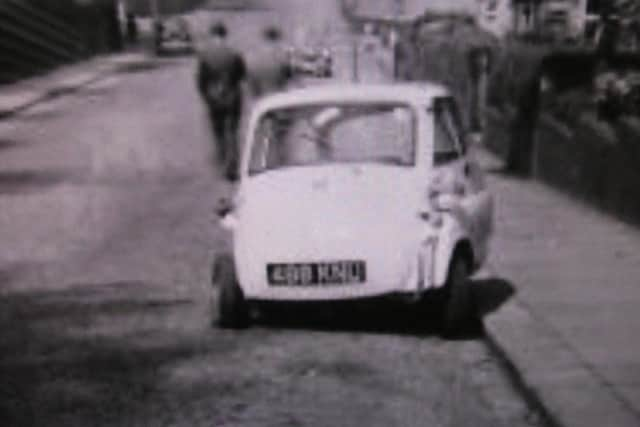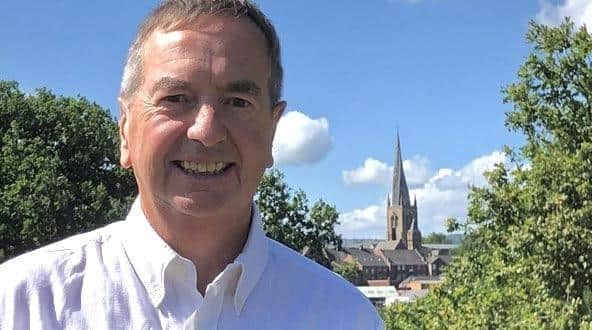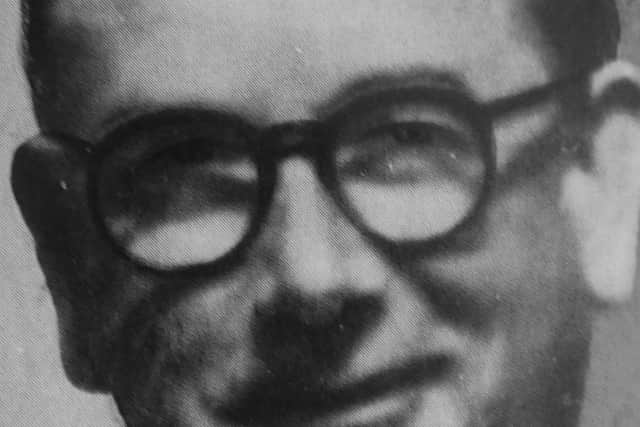New book lifts the lid on Chesterfield's 'Bubble Car Murder', three victims and the biggest case in the history of Derbyshire policing
and live on Freeview channel 276
The bodies of two Chesterfield men were found dumped on the same Peak District lane ten months apart. Their deaths were later linked to a teenager's murder in Germany.
Alan Hurndall, who lives in Dronfield, has written a new book, The Crooked Spire Killings, about the horrific crimes and subsequent police investigation. He said: “The Crooked Spire Killings starts when a student out cycling in the Peak District stumbles across the body of a man. The body is covered in fire ash and some sort of ritualistic pattern of grass obviously made by the killer. It became known as the 'bubble car murder' because the victim, William Elliott, owned one and it was found abandoned near Queen’s Park hours before the discovery of his body. Later George Stobbs was found yards from the same spot in Clod Hall Lane.
Advertisement
Hide AdAdvertisement
Hide Ad"The book follows the police investigation over four years and across two countries. Virtually every male over the age of 17 in Chesterfield, Baslow and Bakewell was interviewed. Four years, three bodies, one suspect, no proof."


In 1965 Michael Copeland was convicted and sentenced to be executed for the killings but his sentence was reduced to life in prison when the death penalty was abolished that year.
Cuttings of the court case collected by a journalist called Tony Fry, who Alan had worked with on The Telegraph and Star newspapers in Sheffield during the Seventies, and later found by Tony’s widow when she cleared out her attic sparked Alan’s interest. He spent many hours trawling through the archive of The Derbyshire Times, Sheffield Star, Morning Telegraph and national newspapers to gather information about the case.
Alan said: "Given the crimes happened more than sixty years ago, all the main players have passed away. However, a young journalist from that time, John Raine, who covered Chesterfield, is still alive and gave me valuable insight into the manhunt and the effect on the town.
Advertisement
Hide AdAdvertisement
Hide Ad"One of the victims was George Stobbs, married with two sons but leading a secret gay life in Chesterfield. The youngest son, Jerry Stobbs, now in his seventies, told me my book has finally allowed him to come to terms with the full circumstances of his father's death. That has given me enormous satisfaction."


Gathering the information wasn’t without its obstacles. Alan said: "I applied to the National Archive to view the records under the Freedom of Information Act. However, there is an historic note in the file from the office of the Director of Public Prosecutions dating back to the early Nineties restricting their release until the year 2050 - ninety years after the first murder. The National Archive cited health and safety and personal data exemptions. They argued that release would be likely to endanger the mental health of the surviving relatives of the victims. This despite the fact that the Stobbs family know all the facts anyway and are wonderfully supportive of my book.
"Unfortunately, Derbyshire Police took the same stance, refusing to even discuss the case with a senior officer or release a redacted account.
"However, local papers like the Derbyshire Times covered the murders and subsequent manhunt thoroughly and responsibly. It makes you realise just how important local newspapers are in recording historical events in a community."
Advertisement
Hide AdAdvertisement
Hide AdThree years ago Alan wrote Pottery Cottage – a book about the murder of four family members near Chesterfield in the Seventies. He said: “I didn’t think locally, at least there was anything on that scale, one of the most horrific crimes in local history. I was wrong on that score. I knew from the sales of Pottery Cottage there was a public appetite for True Crime stories, particularly those that are well researched and well told.”


The Crooked Spire Killings is available on Amazon, either in paperback or electronically, the Chesterfield branch of Waterstones, Chesterfield Visitor Centre, Dunston Garden Centre, the Hackney House Cafe in Barlow and the Edensor Tea Cottage in Chatsworth.
Alan, 69, spent his working life as a journalist, starting off as copy boy and working his way up to become a television news and current affairs producer. He said: "I took up writing books in the autumn of my career. My first work was The Invisible Girl, traditionally published by Harper Collins, a true story written in the voice of a father whose genius succumbed to anorexia. Since then I have become an independent publisher.”
A Londoner, Alan and his wife came north in the Seventies to both work on The Sheffield Star. The couple have three children and nine grandchildren.